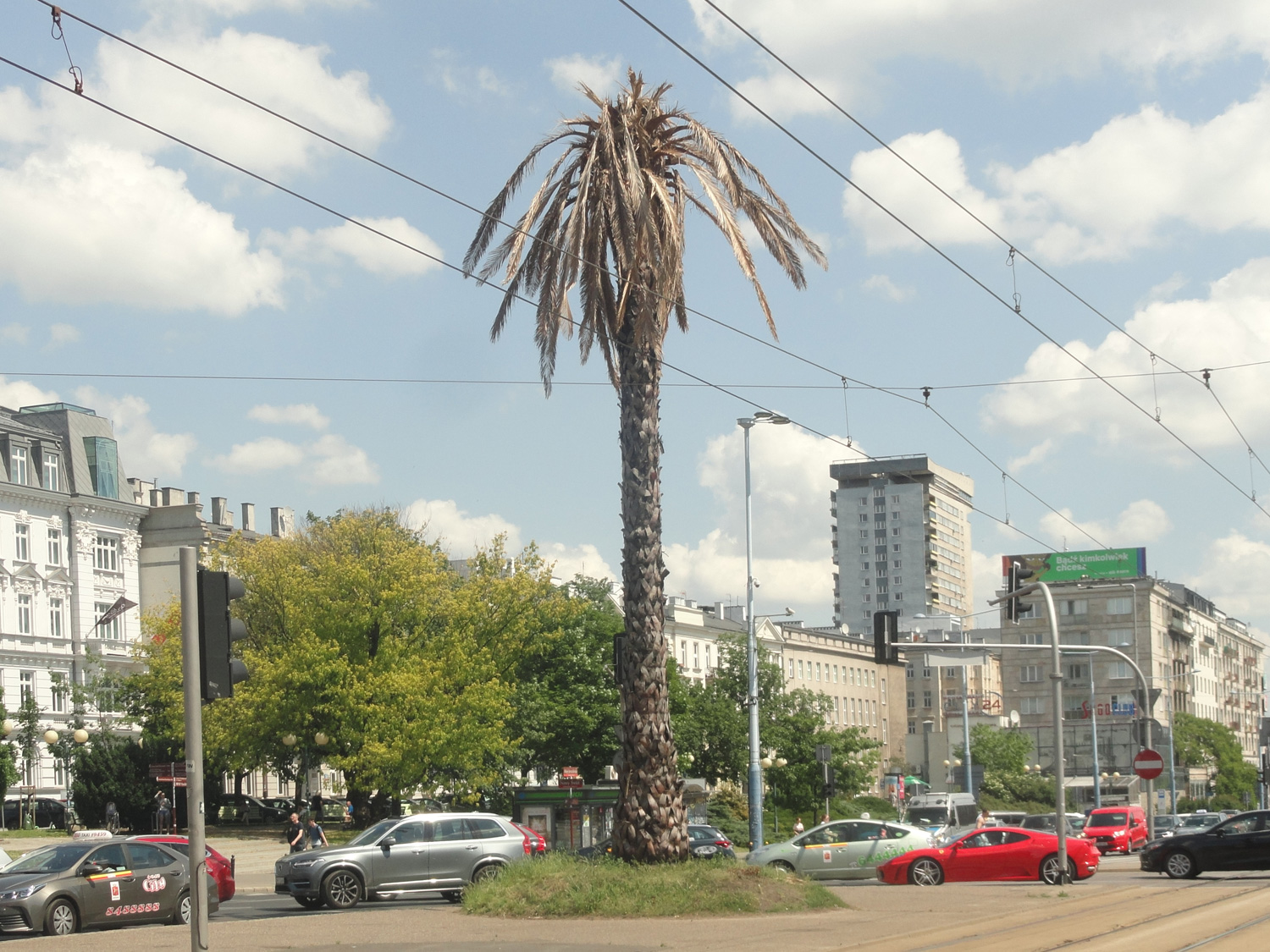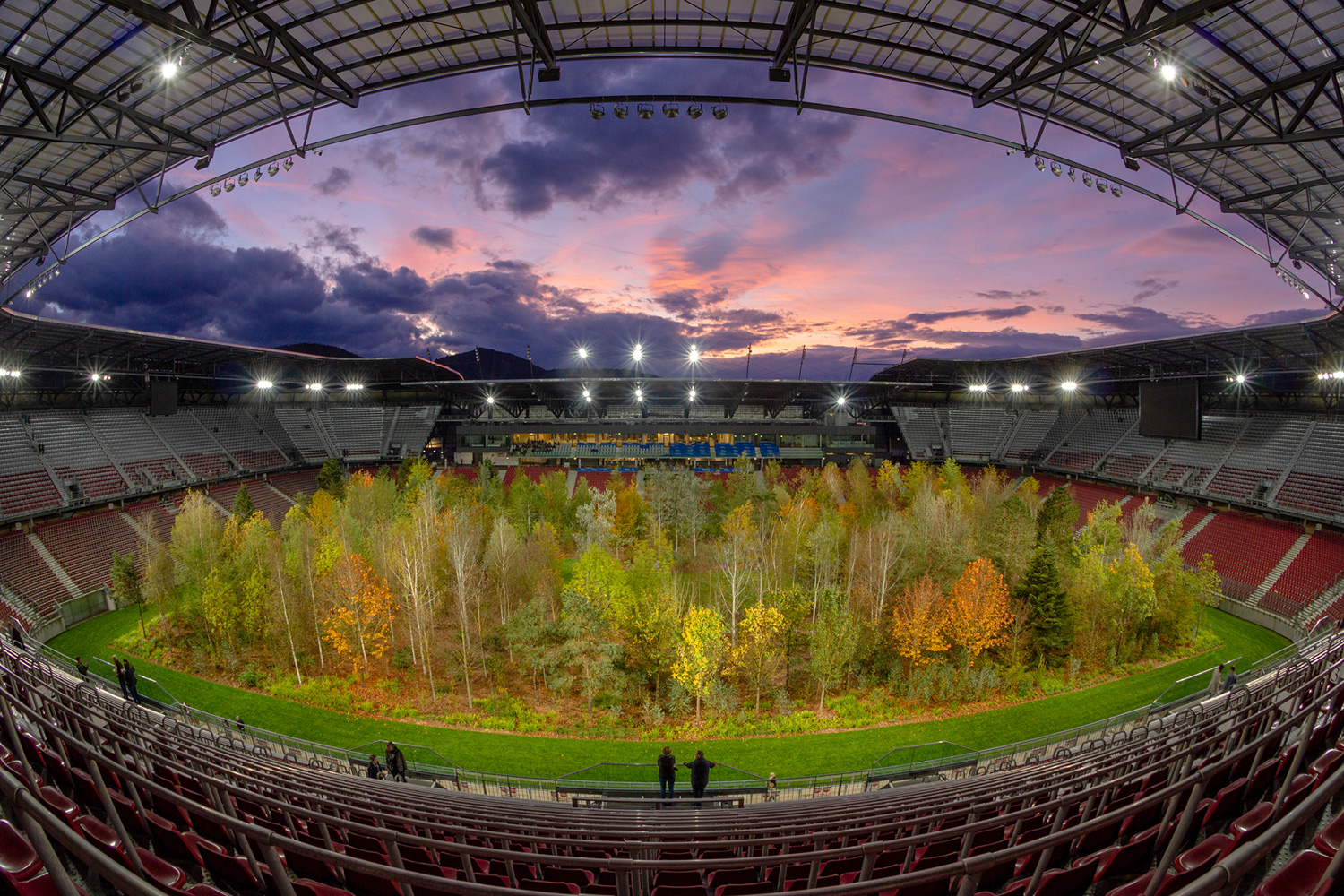Art in Light of Climate Change
Kassel has been the arena for radical creative activities since the 1950s. It is a city that every 5 years hosts the famous documenta. One of key global art reviews. It’ also the place where, not without reason, 40 years ago a certain German artist had a crazy idea. He started planting oak trees. Ultimately, there was supposed to be seven thousand of them. The artist in question was Joseph Beuys. How very different those times were. A time of different priorities. Certainly, ecology was not one of them. It was the era of the Cold War, and the arms race was in full swing. The world remained in the shadow of an atomic holocaust. Who would lose any sleep over climate change? Mind blowing.
The trees were planted over five consecutive years. In the meantime, the initiator of the project passed away. The last oak tree was planted during the next edition of the documenta (1987). Today, full grown oaks can be found all over Kassel. The trees are easily recognisable because of small basalt columns next to each of them. The project, the full name of which is “7000 oaks – afforestation of the city instead of the administration”, raises more and more interest each year. Its context has changed radically over the years, but its relevancy in the face of climate change is not encouraging. The German artist is becoming a pioneer of organic art. However, in the context of this work, we cannot forget a rather important political fact. Beuys was one of the founders of the Green Party in West Germany. Let’s close out the topic of oaks with politics. Look at what’s happening in Poland. Recent years marked an environmental turn around in national art. Women are at the forefront.

Large-scale proof of this can be found in Poznań, where suddenly, three years ago “Totems” appeared. Works by Alicja Biała were placed under the connector between the Sheraton Hotel and the modern Baltic office building, near the Kaponier roundabout. There are six colourful objects. Each one measures more than 8 metres and concerns one of the burning problems of contemporary times. This includes deforestation or the environmental impact of plastic. The objects have QR codes. Once scanned, they let you access scientific research, which has become an inspiration for their creation, and the conclusions you can draw should raise concerns. The number 6 is at the same time a nod towards the sixth mass extinction of species that is currently taking place. The artist is not confined only to her homeland. She created other totems in the UK, Portugal, and Denmark. The project is still underway, which means we can expect a continuation. Let’s go back to Poznań and its “Totems” for a moment. They have one fundamental problem. The environmental message of the work is overshadowed by the multitude of colours. Not everyone – or rather very few people – will have the desire/time to scan a QR code and will walk pass the installation seeing it as a simple addition to the concrete and glass grey cityscape. In other words, the form dominates over hidden content, and the message, such an important part of the work, is perhaps lost?
In the same year, strange things started to happen with the capital city palm tree. Several years ago, the installation dried up. Artificial palm leaves have been replaced by real dried up ones. The event was connected to the World Environment Day. It was an explicit commentary on the environmental situation and progressing climate change. It commented on the problem of heat waves and droughts. The thing – everyone of us can feel on our own – is getting worse. In one of the interviews, the author considered this to be “the most important moment in the history of the project”:
So far, the palm existed within a relation of human concerns. These were important problems, however, they seem unimportant in light of the relation of that which is human with that which is inhuman, i.e. our dependence on the physics and chemistry of the planet.
In Warsaw, the palm got blended in urban landscape and maybe it’s better to say that it has grown into it. However, we should remember that “Pozdrowienia z Alej Jerozolimskich” [From Aleje Jerozolimskie with Love] by Joanna Rajkowska where not intended to deal with climate change. Thematically, the installation concerned (and still concerns) the history of Polish-Jewish relations. Basically, the climate in which the work was created was quite different. In 2002, the new global problem was the war on terror, and Poland was still half a year from the EU accession referendum. As regards matters more closely related to the climate, the democrat and ecologist Al Gore lost a controversial race for the US presidency two years ago. The context has changed dramatically over all these years. Today, it can be said that an artificial tree in the centre of a large city is becoming ambiguous in the face of deforestation or all-encompassing concrete. Instead of a single fake palm tree, Warsaw could use at least 7 thousand (live) oaks. In truth, it’s not the only one. On the other hand, it may turn out that in a few decades’ time, the artificial palm will be accompanied by real ones…
Natalia Bażowska’s opinion is no less interesting. For years, the artist has been reminding us of the relationship between man and nature. The unbreakable bonds, which contemporary civilisation tried to deny. Her work oozes green. It’s soothing and encourages reflection. Just look at the “Dzieci Ziemii” [Children of the Earth] series. Within this framework, so-called rune sculptures were created. The works were created between 2011 and 2015. The artist used both plant and animal parts. She refers to a cycle of nature that humanity is trying upset. Diana Lelonek strikes similar tonnes. Since 2016, the artist has been implementing the “Centrum Żywych Rzeczy” [Centre of Live Things] project. She collects objects that people have thrown away and were dealt with by nature. It has everything… Simply put, an interesting form of commentary on civilisation based on excessive consumption. Naturally, the Centre is constantly growing with no end in sight. So, from an environmental point of view, it is yet another disconcerting message.

While we focus on the Poland, it would be a pity to ignore other voices from the world of art. In 2021, Jenny Holzer spoke about climate issues atop the iconic Tate Modern chimney in London. She did with the words of other people. Her work consisted of quotations of several dozen experts and climate activists, which were displayed on the nearly 100 metre structure. The action was related to COP26, which took place in Glasgow. Holzer has thus tried to encourage people and tourists to act. Words in the fight for awakening and against the passivity of society. Let us not forget that London, after Istanbul and Moscow, is the third largest European city. The artist chose an excellent location. The impact of her grand design is however, difficult to measure. At this point, it is worth considering whether the American artist will return to Poland with one of her unique projects. Perhaps with an ecological message? Who knows. The last time, she made artistic projection at the beginning of last decade.
We have spoken about words and as the saying goes: one picture is worth more than a thousand words. Imagine what a giant artificial whale says… It was 2018 and the Triennale in Bruges was taking place under the slogan “Liquid City”. Studio KCA was invited to participate and created a piece titled “Skyscraper”. A few tonnes of plastic collected from the Pacific were used to create an intriguing installation better known as the “The Bruges Whale”. The large plastic whale was placed in one of the city’s channels, next to Jan Van Eyck’s monument. There is, or rather was, something shocking in this work, which should raise concerns. The behemoth looks like it’s about to jump over the bridge it was placed next to. The viewers are overwhelmed by the sheer amount of plastic waste. After all, it is just a small part of a huge problem created by our species. The work was only temporary and is no longer in Bruges. The question – what have we done? – remains.
Since we started with trees, let us end with them as well. To do that, we need to look into the “For Forest” project. The Austrian city of Klagenfurt am Wörthersee has become the arena of one of the most radical actions in recent years. The word “arena” isn’t used without cause. In 2019, the local football stadium was overgrown. And no it’s not a metaphor. Namely, the turf of the venue normally used to play football was covered with almost 300 trees (!). Some of them were as high as 14 metres. In total, the stadium gained several tree species. The turf metamorphosed into a genuine forest. Klaus Littmann’s remarkable project was seen up close by several hundred thousand guests. The spectacular call to protect and fight for the environment now remains only in pictures. This project was also temporary and lasted less than two months, but it has gone down in art history. Funnily enough, the very same stadium is known by many Poles from TV, but they probably don’t realize that. Long before the turf became a forest – during the European football championship in 2008 – our national team played two matches in Klagenfurt. It lost both times.
… what’s next?
It’s difficult to remain indifferent to the images presented by the media. Ecology is, on one hand, fashion and, on the other, a necessity. There will therefore be more and more creators who tackle this topic. Especially younger ones. It’s no wonder if we consider the circumstances of their youth. In the meantime, climate change will still be happening in the background and will be accompanied by natural disasters. Heat waves, droughts, fires. The pace of the changes is debatable, but the fact remains that the climate clock is ticking. For all of us. The question is whether art and artists’ voices are resounding enough? Finally, is art capable of actually changing anything? To do it, it certainly has to go beyond the walls of a gallery or museum. Exhibitions on climate change – which has become a new standard – will not change the world. Plastic whales or a forest in the middle of a stadium? Perhaps.
Aleksander Świeszewski
 Powrót
Powrót